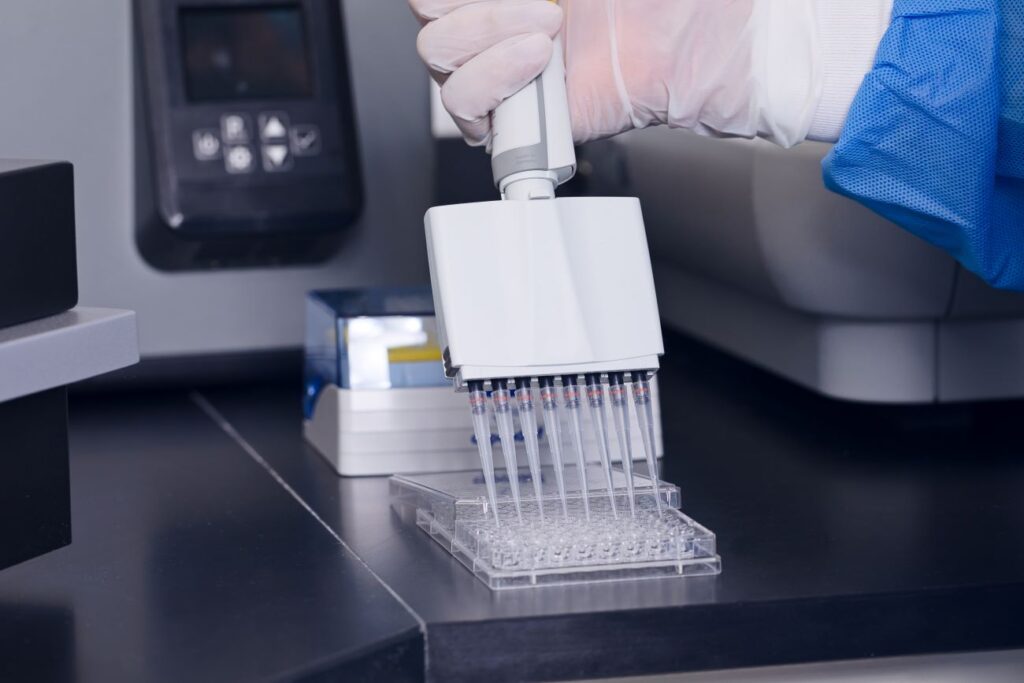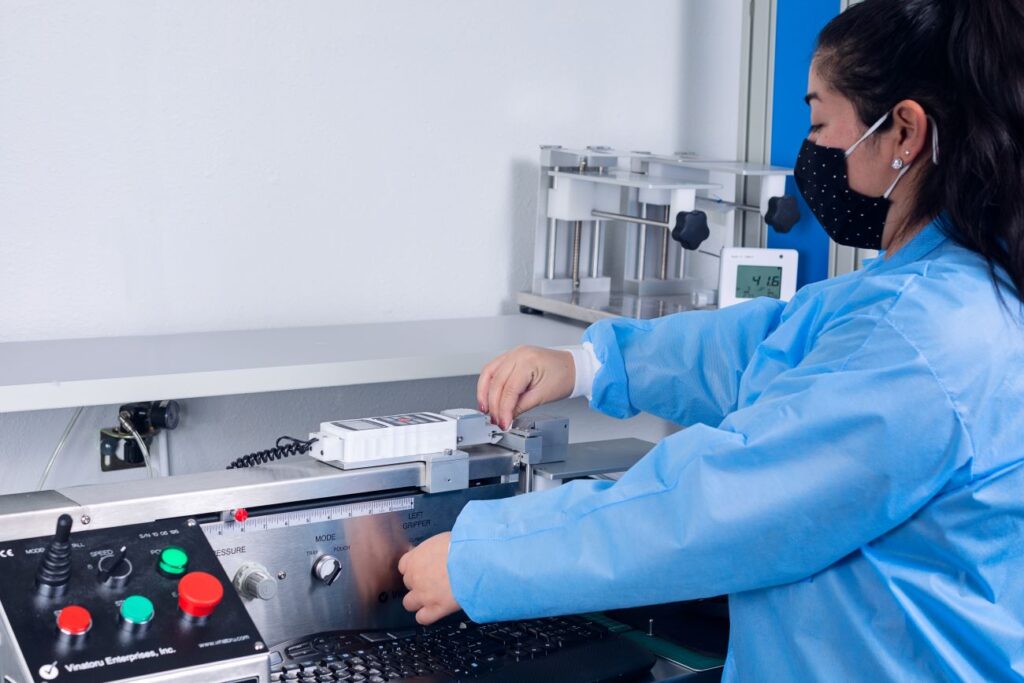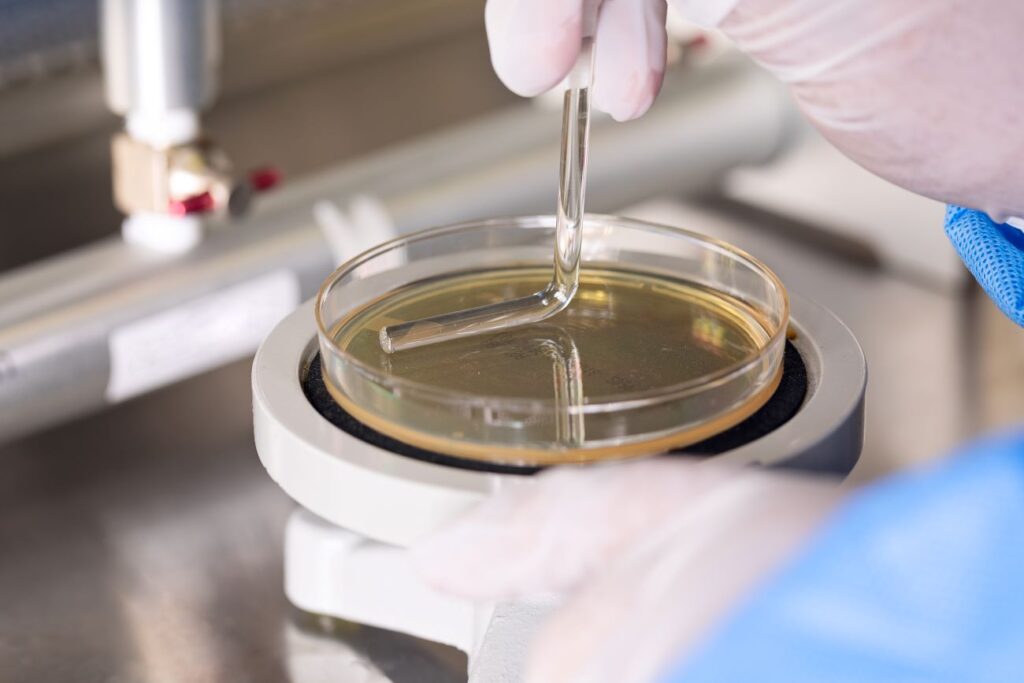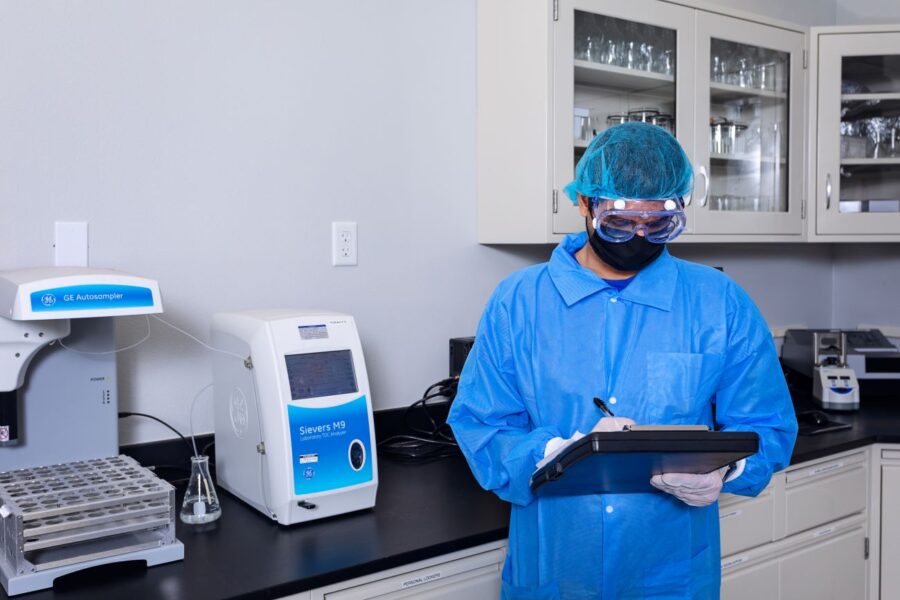When you see a packaged medical device, from a simple syringe to a high-tech implant, it’s easy to overlook the extensive effort that has been invested in the packaging. But that package is not just a mere container or wrapper. It’s a critical component that keeps the medical device protected, safe from environmental contamination, and performs as intended when administered to a patient.
It forms a protective barrier between the sterile medical device and the external environment filled with potential contaminants. And here lies the pivotal role of packaging validation and the instrumental support of laboratory services in ensuring the package’s adequacy.
Understanding Packaging Validation
At its core, packaging validation is a standardized process designed to provide assurance to medical device manufacturers, doctors, and patients. It ensures that a medical device packaging system can consistently achieve its primary objectives: protecting the device, maintaining its sterility, and guaranteeing its functionality throughout its shelf life.
Importance of packaging validation in product quality and safety
Think of packaging validation as the guardian of medical device quality. Prior to use, a medical device has often journeyed across cities, countries, or even continents to get to the end user. If a package has weakened or been compromised, if the device within is jostled around during shipping, or if it is exposed to extreme temperature variations, there is a risk that the device may not perform as intended. In fact, studies have shown that packaging issues account for nearly 50% of all medical device recalls, emphasizing the vital role packaging plays in the product’s overall quality and safety.
Ensuring package integrity ensures that the patient receives a product that’s safe and works as intended.
Role of Laboratory Services in Packaging Validation
What goes behind the seal of every medical device package is the rigorous work of laboratories. According to ISO 11607-1 and ISO 11607-2, laboratories should use validated test methods to ensure that the packaging complies with international standards. These tests mimic the conditions a package might face, from storage to transportation, and putting the packaging through these trials helps manufacturers understand if their packaging is robust enough for the real world.
Moreover, these labs often work closely with manufacturers, providing feedback, insights, and recommendations. With this collaboration, the validation process is not just a checkbox exercise but is a holistic approach that protects patient safety.

Types of Packaging Testing Methods
Before we delve into the specific tests conducted on medical device packaging, it’s important to note that these tests aren’t random or arbitrary. They are the result of years of research, evolving regulations, and a collective understanding of the myriad of challenges that medical devices face during their lifecycle.
Over the past decade, the FDA has emphasized the importance of rigorous packaging testing, citing that it is crucial in preventing nearly 40% of potential device failures. From the moment a device leaves the manufacturer’s facility until it reaches the end user, it encounters a diverse range of environments and potential threats. Each test is purposefully designed to replicate a specific challenge, ensuring that the packaging is not just durable, but also keeps the contained device safe and sterile. This comprehensive approach to testing is what makes medical device packaging trustworthy.
First, let’s look into some examples of packaging validation studies:
- Stability Testing (accelerated and real-time aging): Stability Testing is a race against time but in fast forward. Here, labs simulate the effect of time on packaging using controlled conditions like elevated temperatures. By doing so, they can predict how the packaging might fare over prolonged periods, allowing manufacturers to set realistic expiration dates and ensuring the device remains secure and sterile throughout its lifespan.
- Distribution Testing: This is akin to an obstacle course for packages. Like a stress test for packaging, distribution simulation testing evaluates how well a package can resist shocks, drops, and other forces it might encounter during shipping or storage. This comprehensive test recreates the journey of a medical package – from the bustling corridors of a manufacturing facility to the bumpy ride in a delivery truck, and possibly even an airplane’s cargo hold. Its purpose is to ascertain if the packaging can withstand the cumulative stresses of shipping and handling.

Now, let’s look into some package testing methods to ensure the package maintains integrity:
- Package Seal Strength Testing: As the name suggests, this tests how strong the package seals are, ensuring they meet a minimum requirement while also not being so strong that the end user struggles to open them or results in tears. Two common tests in this category include:
- Peel Test: It measures the force required to peel apart a package’s seal.
- Burst Test: Here, pressure is applied to the package until the seal bursts, determining its maximum holding capacity.
- Package Integrity Testing: With techniques ranging from underwater bubble tests to detailed visual inspections, these tests seek out any and every potential fault in the packaging with techniques like:
- Bubble Emission Test: A package is submerged underwater, and if bubbles emerge, it indicates a leak.
- Visual Inspection: A meticulous eye runs over the packaging, hunting for any imperfections such as pinholes, wrinkles, or delaminations that might jeopardize the package’s integrity.
- Microbial Barrier Testing: This is especially crucial for sterile medical devices. It evaluates the package’s ability to keep out microorganisms, ensuring that sterility is maintained until the point of use.
How test results are interpreted and applied
The results from these tests are not just pass or fail grades. They guide manufacturers by providing insight into potential weaknesses and areas of improvement in the packaging design. They are also critical documentation required by regulatory bodies to prove that a product has been sufficiently tested and is ready for the market.
Interpreting the results is a delicate balance of technical analysis and real-world applicability:
- Data Analysis: Once the lab technician completes testing, the data is reviewed by engineers and specialists to identify any out-of-spec results, anomalies, or patterns suggesting systematic issues.
- Feedback Loop: New findings are communicated back to the manufacturers. In some cases, they will have to validate a new packaging design, and at other times they might suggest the need for adjustments or improvements.
- Recommendations: Based on the results, the engineer often gives recommendations on how packaging can be improved. This could vary from adjusting sealing parameters such as temperature, pressure or time or even rethinking the packaging material.
- Re-testing: If changes are made to the packaging based on the engineer’s feedback, the packaging might be re-tested to ensure the modifications have the desired effect.
- Compliance with Standards: The results ensure that the medical device packaging meets regulatory standards. This compliance is not just about following rules but ensuring the highest level of patient safety.
- Documentation and Record-keeping: During the process, all test results, along with any associated analyses or recommendations, are thoroughly documented. These records are crucial for regulatory compliance and for any future reference.
Selecting a Laboratory for Packaging Validation Services and Factors to Consider
From what we previously discussed, it’s clear that the right laboratory can make a significant difference in the packaging validation process. With the medical device industry being so heavily regulated, manufacturers must exercise due diligence. The right laboratory not only provides accurate test results but also becomes a strategic partner in ensuring the medical device’s safe journey from production to patient use.
Here are some factors to consider when selecting a laboratory for packaging validation services:
- Accreditation and compliance with regulatory standards: Much like how one would choose a hospital based on its reputation and certifications, selecting a lab requires ensuring it meets both local and international regulatory benchmarks. One of the most renowned and globally accepted accreditations for labs is ISO 17025. This certification is granted to laboratories that demonstrate the ability to produce precise and accurate test and calibration data. For medical device manufacturers, partnering with an ISO 17025-accredited lab means the testing and validation processes adhere to international standards, ensuring consistent quality and reliability of results.
- Expertise and experience in packaging validation: While general testing experience is essential, specific expertise in medical device packaging sets a lab apart from the rest. Here’s what to consider under this criterion:
- Years in the Industry
- Diverse Client Portfolio
- Technical Know-how
- Case Studies and Past Projects.
- State-of-the-art Equipment and Facilities: Having advanced, modern equipment is not just about sophistication but about accuracy, efficiency, and reliability. The chosen laboratory should have:
- Regularly Updated Equipment
- Wide Range of Testing Capabilities
- Clean and Sterile Environment.
- Quality of customer service and communication: Collaboration is key. The chosen lab should be transparent, responsive, and adept at explaining complex results in simpler terms. This is especially important when addressing complex scenarios. It’s vital that the lab can convey findings clearly, answer queries, and maintain an open line of communication.
- Turnaround time for testing: In the fast-paced world of medical device manufacturing, how quickly a lab can deliver results can influence product launch timelines. Delays in testing can ripple down the supply chain, causing production hold-ups, missed delivery dates, and potentially lost revenue. Therefore, the laboratory’s efficiency in delivering results is crucial.
The Process of Working with a Laboratory
Engaging with a laboratory for packaging validation is not merely a transaction, but rather a partnership, and it needs to be founded on trust, clear communication, and a mutual understanding of the end goal: ensuring the safety and efficacy of medical devices.
Typically, the process involves:
- Initial Consultation and Requirement Analysis: This is the foundational step where the manufacturer discusses their specific needs, requirements, and expectations with the laboratory. It’s an opportunity to outline the scope of work, understand the range of tests required, and discuss any special considerations, like unique packaging materials or extreme storage conditions.
- Proposal and Quotation: Based on the initial discussions, the lab provides a detailed proposal, which includes the list of tests to be performed, estimated turnaround times, costs involved, and other relevant details.
- Submission of Samples: Once the proposal is accepted, the manufacturer sends samples of the packaging (and sometimes the device itself) to the laboratory for testing.
- Test Execution: The laboratory carries out the various tests as per the agreed-upon plan. During this phase, any unexpected findings or anomalies are promptly communicated to the manufacturer.
- Data Review and Reporting: After the tests are concluded, the data undergoes a rigorous review process. The laboratory then compiles this data into a comprehensive report, detailing the results, observations, and any recommendations.
- Feedback and Iteration: The manufacturer reviews the test results and, based on the feedback, may make necessary modifications to the packaging. If significant changes are made, re-testing might be required.
- Final Approval and Documentation: Once the packaging passes all the validation tests and both parties are satisfied, the laboratory issues a certificate or a statement of compliance. This documentation is crucial for regulatory submissions and for internal quality assurance records.
- Post-Validation Support: Even after the validation process is complete, the relationship doesn’t necessarily end. The laboratory often offers post-validation support in terms of advice, further testing if needed, or addressing any queries that might arise during the product’s market life.
- Continuous Engagement for Periodic Testing: With changes in regulatory standards, material innovations, or modifications in the device, periodic re-validation may be required. The laboratory is usually engaged on an ongoing basis to ensure the packaging remains compliant and effective over time.

ASTM standards
Along with the various testing methodologies and regulations, there’s an added layer of industry-specific standards governed by ASTM International. These standards serve as a blueprint, guiding laboratories and manufacturers on how tests should be conducted to ensure consistency, accuracy, and relevance. ASTM standards are recognized globally and are instrumental in the validation process of medical device packaging.
- Accelerated Aging – ASTM F1980: This test method fast-forwards time, simulating how the packaging will respond to long-term conditions in a shorter duration. Basically, it provides insights into how the packaging will hold up as it ‘ages’, helping determine shelf life.
- Seal Strength (Peel Test) – ASTM F88: With Seal Strength, the focus is on ensuring a balanced seal: one that’s secure yet can be opened without a herculean effort. It ensures that while seals are strong, they can still be opened without causing damage.
- Seal Strength (Burst Test) – ASTM F1140: By applying pressure, this test ascertains the maximum force a seal can withstand before breaking.
- Package Integrity Testing (Bubble Emission Test) – ASTM F2096: As an underwater examination, this test method spots any minor leak points in the packaging. It’s a clever way of spotting even the tiniest leaks in a package.
- Package Integrity Testing (Visual Inspection) – ASTM F1886: A methodical visual scan to find any defects or anomalies in the packaging, from pinholes to wrinkles, that might compromise the package’s integrity.
Once the tests, following the ASTM standards, are successfully completed, the results serve as a testament to the reliability and robustness of the medical device packaging.
Conclusion
In an era where patient safety is paramount, there can be no compromises when it comes to the quality of medical device packaging. Thanks to advancements in testing methodologies, continuous feedback loops, and global standards like those from ASTM, the medical device industry is better equipped than ever, with the global market for medical device packaging expected to reach an annual growth rate of 6.4% from 2020 to 2028.
As the medical landscape evolves with emerging technologies and devices, so does the need for packaging standards and validation processes to adapt.
To any manufacturer in this space, selecting the right laboratory for packaging validation isn’t just a procedural step; it’s a partnership forged in the shared goal of patient safety and product excellence. The symbiotic relationship between manufacturers and laboratories underscores the industry’s commitment to elevating the standards of care, one package at a time.
Summary
- Medical device packaging validation is essential for maintaining the sterility, functionality, and protection of the device from contaminants.
- Packaging validation ensures consistent protection and performance of the medical device packaging system throughout its shelf life.
- Almost 50% of all medical device recalls are due to packaging issues.
- Laboratories play a vital role in the validation process by conducting tests as mandated by ISO 11607-1 and ISO 11607-2 to ensure adherence to international standards.
- Key packaging tests include Stability Testing, Environmental Stress Testing, Distribution Simulation, Package Seal Strength Testing, Package Integrity Testing, and Microbial Barrier Testing.
- ASTM International provides crucial industry-specific standards, like ASTM F1980, F88, F1140, F2096, and F1886, guiding the testing methodologies to ensure consistency and accuracy.

